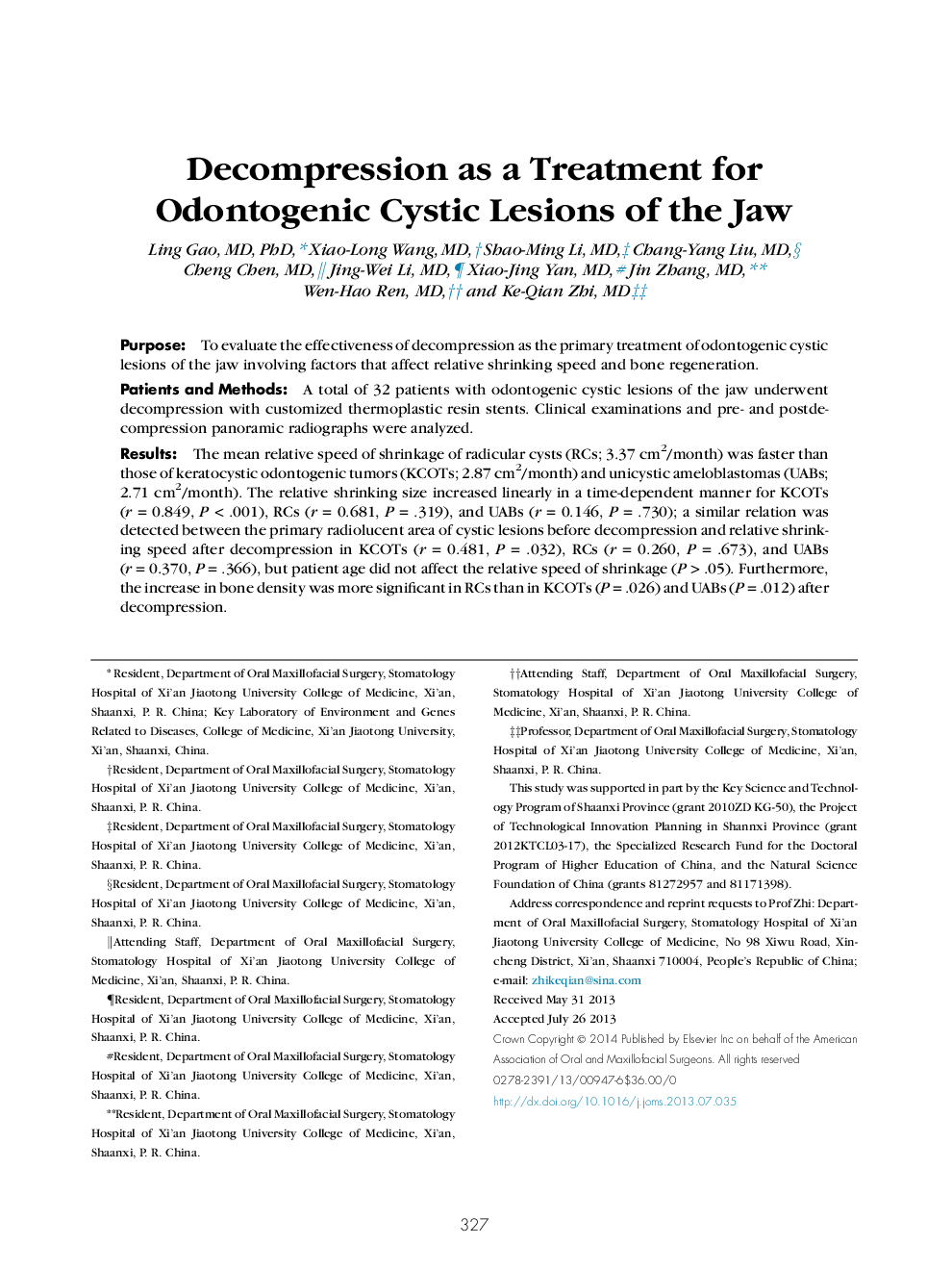| Article ID | Journal | Published Year | Pages | File Type |
|---|---|---|---|---|
| 3156369 | Journal of Oral and Maxillofacial Surgery | 2014 | 7 Pages |
PurposeTo evaluate the effectiveness of decompression as the primary treatment of odontogenic cystic lesions of the jaw involving factors that affect relative shrinking speed and bone regeneration.Patients and MethodsA total of 32 patients with odontogenic cystic lesions of the jaw underwent decompression with customized thermoplastic resin stents. Clinical examinations and pre- and postdecompression panoramic radiographs were analyzed.ResultsThe mean relative speed of shrinkage of radicular cysts (RCs; 3.37 cm2/month) was faster than those of keratocystic odontogenic tumors (KCOTs; 2.87 cm2/month) and unicystic ameloblastomas (UABs; 2.71 cm2/month). The relative shrinking size increased linearly in a time-dependent manner for KCOTs (r = 0.849, P < .001), RCs (r = 0.681, P = .319), and UABs (r = 0.146, P = .730); a similar relation was detected between the primary radiolucent area of cystic lesions before decompression and relative shrinking speed after decompression in KCOTs (r = 0.481, P = .032), RCs (r = 0.260, P = .673), and UABs (r = 0.370, P = .366), but patient age did not affect the relative speed of shrinkage (P > .05). Furthermore, the increase in bone density was more significant in RCs than in KCOTs (P = .026) and UABs (P = .012) after decompression.ConclusionDecompression was effective in reducing odontogenic cystic lesions of the jaw and increasing bone density. For aggressive lesions, secondary definitive surgery was necessary.
